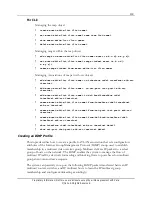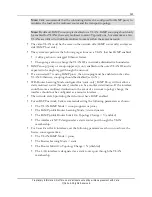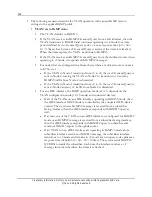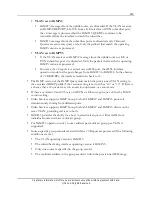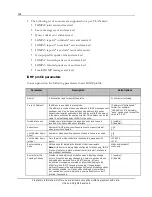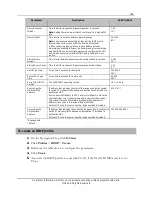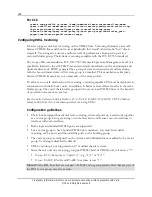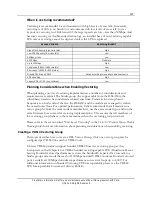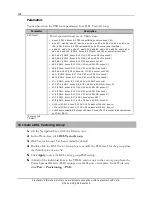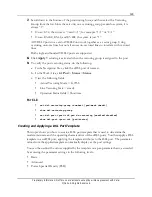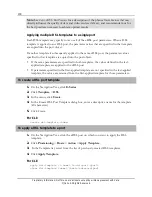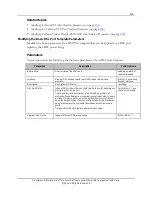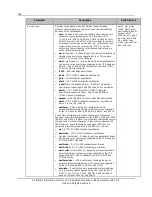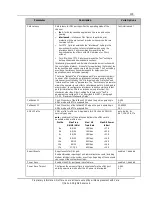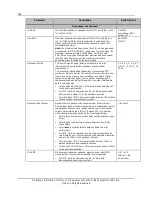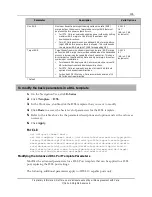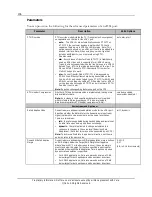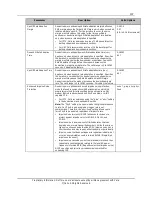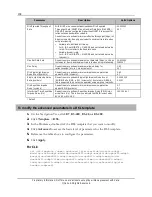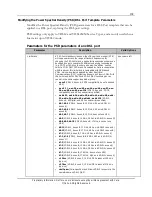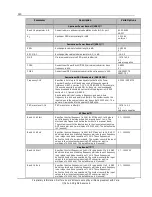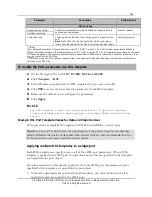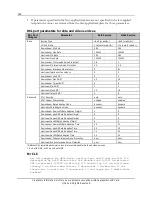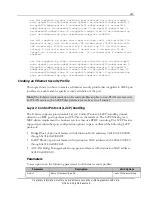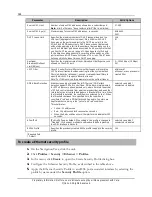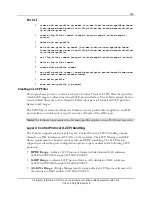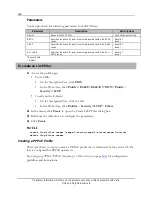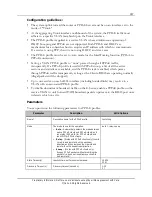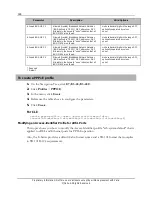
133
Proprietary Information: Not for use or disclosure except by written agreement with Calix.
© Calix. All Rights Reserved.
Parameter
Description
Valid Options
Path Latency
Path latency for DSL port specifies the operating mode of the
channel.
fast
– for delay sensitive applications like voice and online
gaming.
interleaved
– interleaves DSL frames to optimize error
protection in the presence of impulse noise sources that are
common to DSL.
For IPTV, Calix recommends the "interleaved" setting in the
downstream direction. Latency is tunable when using the
interleaved path, Calix recommends maximizing the
downstream delay of 8 ms with MS Mediaroom, or 20 ms
without.
For HSI with no IPTV, Calix recommends the "fast" setting in
both upstream and downstream directions.
Interleaving leverages Reed-Solomon forward-error correction with
the cost of added latency. It is useful for applications that are not too
delay-sensitive and require very low bit error rates. The Fast setting
provides a low-latency transmission path for delay-sensitive
applications, such as Internet gaming.
The terms “fast path” and “interleaved path” are pertinent to G.dmt.
In newer xDSL standards, an interleaver is always used, and that
interleaver is controlled by the “Min Impulse Noise Protection” and
“Interleave Max Latency” parameters. The “Path Latency” parameter
allows the operator to select fast or interleaved path in G.dmt, and in
other modes, to configure the interleaver to behave similarly to fast
path (minimal delay, little to no impulse noise protection). For
standards other than G.dmt, setting Path Latency to “fast” is
equivalent to a setting of S1, as described in G.997.1, paragraph
7.3.2.2, “Maximum Interleaving Delay”.
fast, interleaved ‡
Fallback VPI
The VPI number of the fallback PVC when the port is operating in
ADSL mode with ATM encapsulation.
0-255
0 ‡
Fallback VCI
The VCI number of the fallback PVC when the port is operating in
ADSL mode with ATM encapsulation.
32-65535
35 ‡
VDSL2 Profile
VDSL profile for xDSL port. Applicable for VDSL2 and VDSLMM
service types only.
auto
= enables all of the profiles and allows the xDSL card to
negotiate which profile to use.
Profile
Max Freq
DS/US (MHz)
Max
‡
US
Train Rate
Max DS Power
(dBm)
8a
8.5/5.2
18 Mbps
+17.5
8b
8.5/5.2
18 Mbps
+20.5
8c
8.5/5.2
18 Mbps
+11.5
8d
8.5/5.2
18 Mbps
+14.5
12a
8.5/12
60 Mbps
+14.5
12b
8.5/12
60 Mbps
+14.5
17a
17.7/12
60 Mbps
+14.5
auto, 8a, 8b, 8c,
8d ‡, 12a, 12b, 17a
Report Events
Report events for DSL port.
Enables/disables reporting of port remove/restore events (including
modem retrains) in the system event logs. Reporting of these events
can congest the system event logs.
enabled ‡, disabled
Power Save
Enables the xDSL port power save feature.
enabled ‡, disabled
Power Save Timeout
Configures the amount of time in minutes before the xDSL port
enters power save mode after the AC power is interrupted.
0-480
5 ‡

